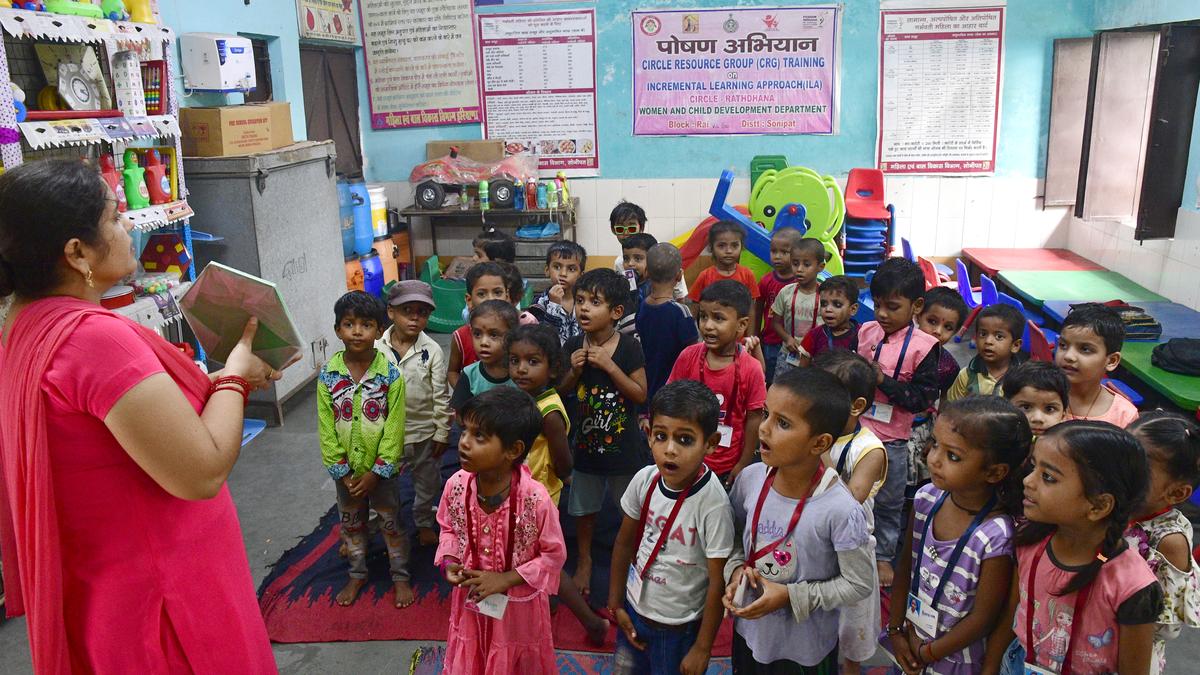The National Education Policy 2020 (NEP) has ushered in transformative changes in the educational landscape of India, particularly in the field of Early Childhood Care and Education (ECCE). While private schools have had nursery classes for long, government schools have historically admitted children only from Class one, thus sowing the seeds of inequity even before the start of schooling. By paving the way for the opening of preschool classes for 3-6 year olds in government schools — previously catered to only by Anganwadis in the public sector — the NEP has initiated a long-overdue structural transformation towards equity.
There are three key structural shifts in the ECCE sector, driven by the NEP, with each one unfolding at a different pace. Understanding these shifts and preparing for them is crucial in ensuring quality early childhood care and education for the nation’s children.
COMMENT | Rewriting the script of early childhood education
An expansion
First, the expansion of the ECCE sector. A significant but often underappreciated shift is the anticipated growth of the ECCE sector by 2030, the target year for its universalisation. For decades, the public sector’s ECCE infrastructure had stagnated at approximately 14 lakh Anganwadi centres. This is now set to expand significantly. With the NEP paving the way for three preschool classes (Balvatika-1,2,3) in government schools, the number of public ECCE classes will increase significantly. This will have substantial implications for personnel management, including the financing, recruitment, training and deployment of skilled ECCE providers.
The Ministry of Education has already begun allocating budgets under the Samagra Shiksha scheme for the ECCE. Many States and Union Territories (UTs) have begun utilising this provision to introduce preschool classes in government schools. But, some have not begun to use this provision, while others have under-utilised it with some training or material being added, without starting additional classes. The extent and manner of this utilisation needs to be tracked.
Also Read | Early Childhood Education: The squeeze on anganwadi workers
Migration from anganwadis
The second shift is the growing emphasis on education when compared to other ECCE services such as health and nutrition. This trend is already visible in the Union Territory of Dadra and Nagar Haveli and Daman and Diu, where the Union Territory has introduced a preschool class in all its primary schools, prioritising the admission of 4-6 year olds. This has resulted in a substantial migration of this age group from Anganwadis to schools.
Data shows that parents have overwhelmingly preferred preschool classes in schools over Anganwadis, when given both options. This migration is largely driven by the perception that schools offer better educational opportunities. As a result, the traditional image of Anganwadis as vibrant centres filled with toddlers is now at risk as more government schools open preschool classes, and children in the 3-6 year age group move out of Anganwadis to schools.
The Anganwadi system must adapt by emphasising education as a part of its ECCE services. The Ministry of Women and Child Development’s ‘Poshan bhi Padhai bhi’ initiative is a timely step. However, its success depends on tangible implementation at the ground level, targeting an increase in measurable indicators such as the time spent by an Anganwadi worker on educational activities.
While schools cater to this demand, they need to be aware of the risks of excessive ‘schoolification’ of pre-schooling. They need to retain play at the centre of this education, in order to focus on the breadth of skills, instead of focusing on the narrower skills of reading and writing in the pre-school classes.
Also Read | The economic case for investing in India’s children
The critical role of home visits
Third, the potentially most transformative shift is the possible reorientation of the Anganwadi system to focus on children aged 0-3 years through home visits, rather than focusing on 3-6 year olds attending the centres. Research, such as the ‘Perry Preschool at 50’ study in the United States and the Yale university study in Odisha done in collaboration with Pratham, highlights the critical role of home visits in early childhood development programmes.
In India, policymakers such as V. K. Paul (Member, NITI Aayog) and N.C. Saxena (IAS, retired ) have long advocated focusing on 0–3-year olds within the Integrated Child Development Services (ICDS) framework, given the disproportionate developmental benefits during this stage. While the Prime Minister’s Overarching Scheme For Holistic Nourishment (POSHAN) Abhiyan has emphasised the importance of the first 1,000 days of life, implementation challenges persist. Overburdened Anganwadi workers naturally focus on 3-6 year olds who are physically present at the centres, leaving limited scope for individualised services to 0-3 year olds through home visits.
If government schools assume responsibility over 3-6 year-olds, we have a unique opportunity where the Anganwadi system could redirect its focus towards 0-3 year olds, along with the care of pregnant and lactating mothers, through more intensive home visits.
This shift, if realised, would mark a truly transformative change in India’s ECCE framework. The seeds for this transition have already been sown in the NEP 2020.
Jatin Goyal is Director (Education), Union Territory of Dadra Nagar Haveli and Daman and Diu, and Joint Secretary (Finance). He was Director (Women and Child Development) earlier. The views expressed are personal
Published – August 01, 2025 12:41 am IST
